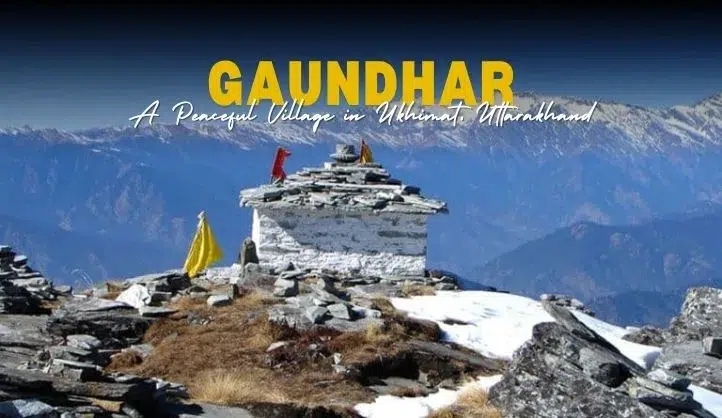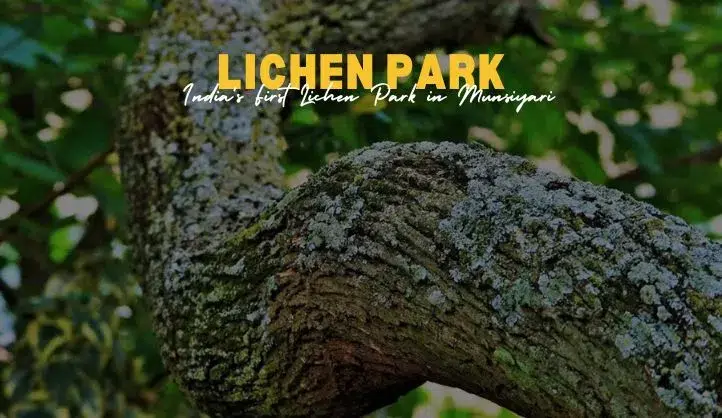Nestled in the heart of the majestic Himalayas, Gangotri National Park stands as a testament to the untouched beauty of nature. Spanning across the pristine landscapes of Uttarakhand, India, this national park is a haven for biodiversity, adventure seekers, and spiritual pilgrims alike. With its diverse flora and fauna, awe-inspiring vistas, and cultural significance, Gangotri National Park is a sanctuary of unparalleled natural splendor.
Gangotri National Park: A Sanctuary of Natural Splendor
Geography:
Gangotri National Park is in northern India, in the Uttarkashi District of Uttarakhand. It covers 2,390 sq km of mountainous land. The park is along the Bhagirathi River and includes the Gangotri Group of the Garhwal Himalayas. The park’s northeastern section is the border between India and Tibet. The park has the Gaumukh Glacier and the source of the Ganges River. The park’s alpine meadows are great for plants and animals.
Geology:
The mountains in Gangotri National Park are part of the Gangotri Group, which is a subdivision of the Garhwal Himalaya, a part of the Himalaya. The famous Gangotri Glacier is in the park and is one of the main sources of the Ganges. It is one of the largest glaciers in the Himalayas, stretching 30 km (19 mi) long and 2 to 4 km (1 to 2 mi) wide.
Common rocks in the park include quartz, kyanite schist, granite, garnet mica schist, and augen gneiss. The peaks in the park are north of the Main Central Thrust along the Indian and Eurasian plate boundary. The Himalayas formed during the Late Cretaceous when the Eurasian plate and the Indian plate collided, creating many of the world’s tallest peaks.
Ecology:
The Gangotri National Park has ecosystems found in the Himalayas. Lower areas have forests with fir, deodar, oak, spruce, and rhododendron trees. Higher areas have shrubs. Meadows are also found near glaciers. Landslides have separated parts of the park, creating different landscapes. The park has over 150 bird species and 15 mammals. It is home to the rare snow leopard, as well as brown bears, blue sheep, musk deer, Asian black bears, and Himalayan tahr.
Human History
The area around Gangotri National Park has been lived in for a long time. There are old paintings and shelters that are at least 12,000 years old, and other things from about 1,500 BCE. From the fourth to the fourteenth century, the land around the park was ruled by the Katyuri dynasty. When India became independent, the Garhwal Kingdom became the Uttarakhand state.
The park was made in 1989 to protect the plants and animals and the cultural importance of the famous mountains. Today, Uttarkashi is a city nearby that people use to start hikes in the mountains. Even though Uttarkashi is close to the park, most of the park is not developed. There are small communities around the park that have pastures for animals and religious temples.
Major Trails & Hiking Areas
Gangotri National Park, established in 1989, covers an area of approximately 2,390 square kilometers in the Garhwal Himalayas. This ecological treasure is not only a national park but also a UNESCO Biosphere Reserve, recognizing its significance in conserving biodiversity while promoting sustainable development.
A Flourishing Biodiversity: Flora and Fauna
Gangotri national park’s elevation ranges from around 1,800 meters to over 7,000 meters, leading to a remarkable diversity of flora and fauna adapted to varying altitudes. Lush alpine meadows, dense coniferous forests, and cascading glaciers contribute to the park’s vibrant tapestry.
Flora:
The park is adorned with a rich array of plant species, including rare and endemic ones. From the graceful Brahma Kamal, Uttarakhand’s state flower, to the sturdy Deodar and Blue Pine trees, Gangotri National Park offers a botanical spectacle that changes with the seasons.
Fauna:
The wilderness of Gangotri national park is home to an impressive range of wildlife. Rare and elusive creatures like the Snow Leopard, Himalayan Tahr, and Musk Deer inhabit the rugged terrains. Bird enthusiasts are rewarded with sightings of the Himalayan Monal, Golden Eagle, and various pheasants.
Spiritual Nexus: Gaumukh and Ganges
Gangotri, the source of the sacred Ganges River, holds immense spiritual significance for Hindus. The glacier, known as Gaumukh due to its cow-like shape, is a revered pilgrimage site. It’s believed that bathing in the icy waters here cleanses the soul, and thousands undertake the arduous trek to witness this holy phenomenon.
Trekking Trails and Adventure: A Thrill-seeker’s Paradise
Gangotri National Park beckons adventure enthusiasts with its array of trekking trails. The Gaumukh Tapovan Trek leads trekkers through pristine landscapes to the base of the Shivling Peak. The Nandanvan Trek offers breathtaking views of the Bhagirathi peaks and the tranquil Nandanvan Glacier. These trails not only offer physical challenges but also a chance to connect with the untamed beauty of the Himalayas.
Conservation and Challenges: Preserving a Gem
While Gangotri National Park remains a haven for biodiversity, it also faces challenges such as climate change, increasing tourism impact, and habitat degradation. Authorities are working diligently to address these concerns through sustainable tourism practices, community involvement, and conservation efforts.
Preserving the Future: Responsible Tourism
To ensure the preservation of this natural gem, responsible tourism is imperative. Visitors are encouraged to follow guidelines, respect wildlife habitats, and minimize their ecological footprint. By treading lightly and leaving no trace, we can collectively safeguard the park’s pristine environment for generations to come.
Top Places to Visit in Gangotri National Park: Ticket Price, Entry Time, and Everything You Need to Know
1. Gaumukh Glacier: The Birthplace of the Ganges
Overview:
Gaumukh Glacier, often referred to as the “Cow’s Mouth,” is the source of the sacred River Ganges. This awe-inspiring glacier is a revered pilgrimage site and a mesmerizing natural wonder.
Ticket Price:
The entry fee for Gaumukh Glacier varies for Indian and foreign tourists. Indian citizens are typically charged a nominal fee, while foreign tourists pay a slightly higher fee.
Entry Timings:
Visitors can undertake the trek to Gaumukh Glacier during the daytime. However, it’s recommended to start the trek early in the morning to make the most of the daylight hours.
2. Tapovan: A Spiritual and Scenic Haven
Overview:
Tapovan, a high-altitude meadow, offers panoramic views of the surrounding Bhagirathi peaks. It’s a favored destination for meditation and spiritual practices.
Ticket Price:
Entry to Tapovan is usually included in the overall trekking permit for Gangotri National Park. Visitors need to obtain a permit before embarking on the trek.
Entry Timings:
Since Tapovan is accessed through trekking, visitors usually start the trek in the early morning hours to reach the meadow by afternoon.
3. Gangotri Temple: Spiritual Pilgrimage
Overview:
Gangotri Temple, dedicated to Goddess Ganga, is one of the Chota Char Dham pilgrimage sites. It holds immense significance for Hindus and offers a tranquil space for devotion.
Ticket Price:
There is no entry fee to visit the Gangotri Temple. However, visitors are encouraged to contribute to the temple’s maintenance and charitable activities.
Entry Timings:
The temple is usually open from early morning to late evening. The best time to visit is during the morning and evening aartis (rituals).
4. Bhagirathi Shila: Ancient Legend
Overview:
Bhagirathi Shila is a rock that is revered as the spot where King Bhagirath meditated to bring the River Ganges to Earth.
Ticket Price:
There is no specific entry fee for Bhagirathi Shila, as it’s usually a part of the Gangotri Temple visit.
Entry Timings:
Bhagirathi Shila can be visited during the temple’s open hours. It’s often a part of the temple complex.
5. Gaurikund: Serene Hot Springs
Overview:
Gaurikund is a natural hot spring where it is believed that Goddess Parvati performed her penance.
Ticket Price:
The entry fee for Gaurikund is usually nominal. Visitors can access the hot spring area after paying the entry fee.
Entry Timings:
Gaurikund can be visited during daytime hours. It’s an ideal place to relax after trekking.
6. Gangnani: Soothing Hot Springs
Overview:
Gangnani is known for its natural hot springs that offer a relaxing experience amidst the Himalayan backdrop.
Ticket Price:
The entry fee for Gangnani’s hot springs is generally affordable. It covers the use of the bathing area and facilities.
Entry Timings:
The hot springs in Gangnani are open during the daytime. It’s a great place to unwind after your trekking adventures.
Conclusion
Gangotri National Park offers a blend of natural wonders, spiritual sanctuaries, and trekking delights. Exploring these top places within the park allows you to connect with nature’s magnificence and delve into the spiritual essence of the Himalayas. While the ticket prices and entry timings may vary, the experiences you gather and the memories you create in Gangotri National Park are priceless.
Frequently Asked Questions (FAQs) about Gangotri National Park
Q1: Where is Gangotri National Park located?
A1: Gangotri National Park is situated in the Indian state of Uttarakhand, in the Garhwal Himalayas. It covers a vast area ranging from high-altitude glaciers to lush alpine meadows.
Q2: What is the significance of Gangotri National Park?
A2: Gangotri National Park holds immense ecological, cultural, and spiritual significance. It is the origin of the holy River Ganges and is home to diverse flora, fauna, and spiritual landmarks.
Q3: How can I reach Gangotri National Park?
A3: Gangotri National Park is accessible by road from major cities and towns in Uttarakhand. The nearest major town is Uttarkashi. Visitors usually reach Gangotri town by road and then trek to various attractions within the park.
Q4: Are there any entry fees to visit Gangotri National Park?
A4: Yes, there is an entry fee for visiting Gangotri National Park. The fee varies for Indian citizens and foreign tourists. It helps support the conservation efforts and maintenance of the park.
Q5: What are the main attractions within Gangotri National Park?
A5: The main attractions within Gangotri National Park include the Gaumukh Glacier (the source of the Ganges River), Tapovan meadows, Gangotri Temple, Bhagirathi Shila, Gaurikund, and Gangnani hot springs.









